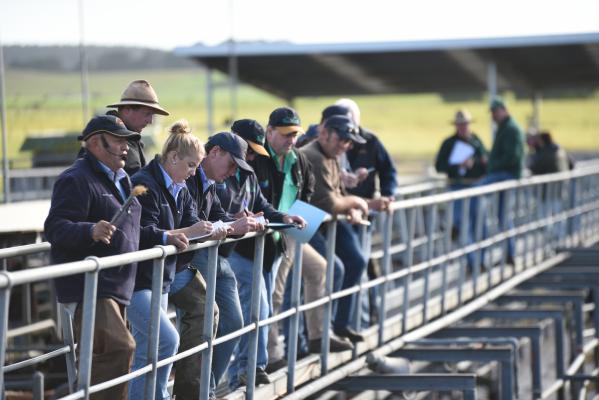
Leon Georgiou
THE region’s livestock producers continue to experience strong sales and favourable weather conditions this month, with the Mount Gambier and District Saleyards netting record yarding numbers.
Current stock agent chair Sam O’Connor believes the sector remains “in a very positive state” as sales and prices continuing to trend upwards.
Store sales in particular are experiencing record numbers as producers take advantage of high cattle prices – with last fortnight’s store sale at Glenburnie yarding over 4000 head.
“The appetite for smaller cattle is just insatiable, NSW farmers just can’t get enough… so our local producers are selling their stock younger and smaller and taking advantage of the great prices,” Mr O’Connor said.
The current demand is being driven by a nation-wide cattle herd rebuild, particularly through New South Wales, as farmers look to replenish their stock after two years of drought-induced decline.
With the exception of parts of Western Australia, most cattle producing regions across Australia have also seen improved seasonal conditions.
Above average rainfall in the northern parts of Australia, along with exceptional rains throughout NSW, has left many farmers throughout these regions with an abundance of feed, which has also helped drive demand.
According to Meat & Livestock Australia, cattle numbers fell to 24.6 million head in 2020, the lowest levels since the early 1990s.
Numbers are expected to rebound by 2pc in 2021, as the national cattle herd enters into a rebuild phase.
But Mr O’Connor said it was a “double edged sword”, with the strong store sales at the Mount Gambier and District Saleyards impacting the fat market sale numbers.
Consequently, while store sale numbers are historically high now, they are expected to be lean over the next 12 months, as large numbers of stock continue to be sold and moved north, out of the Limestone Coast.
“I think that our cattle numbers, although they’re historically very high now, I think for the next 12 months they’ll probably be historically low,” Mr O’Connor said.
“Because we’ve forward sold so many cattle that normally wouldn’t come onto the market until the spring time,” he added.
Yet, despite the slowing store sale forecasts, Limestone Coast producers still look to be in good shape with favourable weather conditions delivering the traditional Anzac Day seasonal break, which should help producers secure feed into the summer.
“We were lucky enough to get what we’d now consider to be the break a few weeks ago with good rainfall, and since then, we’ve had steady follow up rains,” Mr O’Connor said.
“We’d love to see another good rain event in the next couple of weeks now, to really solidify that break, but certainly, I think we’ve had the break in the season and it’s been a good one so far.”
HAVE AN AG STORY TIP? Contact leon.georgiou@tbwtoday.com.au








